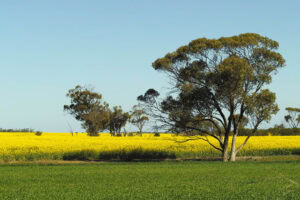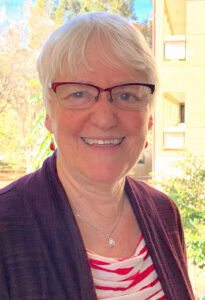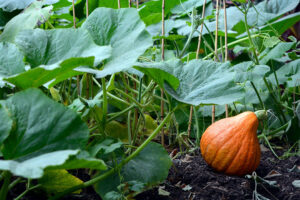10 tips to improve soil health

Dr Lynette Abbott in Perth is an expert in the field of soil health. Farmers in Australia are improving their practices, she says. “But managing the soil organisms is a little bit tricky. It is not necessarily the focus of growers.”
Emerita professor Abbott is a well-known academic at The University of Western Australia’s School of Agriculture and Environment and Institute of Agriculture. She moved to Perth in 1974, researched the role of mycorrhizal soil fungi in agriculture and disturbed natural environments and became a world leader in this field.
Dr Abbott recently received the inaugural General Jeffery Soil Health Award for her dedication to improving soil health during her career. “I am honoured to receive this award. Major General Michael Jeffery had an important role in the advocacy of soil health. He had an amazing influence of raising awareness”, she says.
Manage living organisms

Over the years Dr Abbott realised that farmers often did not fully take advantage of the living component of their soils. “We know that there are organisms in soil that are doing a lot of things”, she emphasises. “But how do you actually manage them so that you get the benefits of this biological base? Growers know a great deal about selection of the best cultivars or the best management of fertiliser but managing soil organisms is more difficult. That is not necessarily the focus of growers. It is still not easy for managers of agricultural land to incorporate this part of farming into their daily practise.”
Dr Abbott spent a lot of time sharing her knowledge with students and established the innovative ‘Know your Soil Biology’ workshops for farmers. “There is much more interest now in a healthy soil”, Dr Abbott says. “And there is more understanding.”
Soil health: complex and layered
According to Dr Abbott soil is a biodiversity hotspot. “You have bacteria, fungi and many kinds of little animals working together to contribute to soil health. Some are involved in breaking down organic matter, some change nutrients from one form into another. And many organisms use organic matter for their own habitat. Some of those organisms are even involved in maintaining good soil structure. Earthworms play a valuable role of course but even the smaller animals have a role at a finer level.”
Bacteria and fungi also have an important role in maintaining soil structure, Dr Abbott points out. “Some produce sticky substances that help in binding particles. At every scale, soil organisms have roles in aggregation of particles and the transformation of nutrients. It’s complex and layered.”
With the Land Management Society of WA, Dr Abbott introduced the ‘Know your Soil Biology’ workshops. “I went out with microscopes and spent a whole day investigating soil biology with up to ten farmers at a time. This involved looking at soil fertility from the aspect of biology in contrast to the main focus on soil chemistry.”
Best management practices

Dr Abbott would discuss best management practices for the organisms in the soil. “One important practice is to make sure that organic matter is returned to the soil”, she says. “The re-cycling process ensures the biological component of soil is much more active. Even if the soil carbon level does not increase, the turnover processes contribute to a healthy soil.”
Having a variety of different kinds of plant matter can increase the diversity of soil organisms. That is key
She points out that the diversity of organic matter that is added to the soil is also vital. “Having a variety of different kinds of plant matter can increase the diversity of soil organisms. That is key. It is not possible to manage individual organisms because the organisms work as a whole community.”
Professor Abbott says that even a small amount of organic matter will help. “Although it can be hard to build carbon in broadacre cropping systems in Western Australia, following the principles that support soil organisms – so that nutrients are cycling through the organic matter – still provides a benefit. A fraction is still a value.”
Continuous cropping
Dr Abbott notices that there is tendency to grow crops repeatedly in Western Australia because of the high prices of wheat at the moment. “But continuous cropping can be detrimental to the biological base of soil”, she says. “Previously there were more pastures in rotation with crops which contribute to rejuvenating the soil. There is now also less dependency on symbiotic microbial activity in the soil.”
In her workshops, Dr Abbott tried to give farmers a better appreciation of the diversity of organisms their soils. “We did not focus on recipes for management because everyone’s land is slightly different. Farmers often already have a local knowledge of their soils. We just helped to make them more confident in what they were doing. Local knowledge of the soil is needed.”
Overall, farmers in Australia are improving their practices, Dr Abbott says. She herself has been involved in replanting native trees and shrubs on The University of Western Australia’s farm at Pingelly to improve the condition of remnant vegetation. “We’re replanting native vegetation strategically across the farm to contribute to the system holistically. The restored natural vegetation will have an impact on water flow as well as improving some more marginal and less productive areas of pasture. This restoration is also used for grazing and shelter for farm animals.”
Plant cover

Dr Abbott says the focus on soil carbon at the moment will contribute to improved land management. “Carbon is the basis for life of all the organisms in the soil “she says. “It contributes to water and nutrients flows in the soil, helps with fertiliser use efficiency and makes the soil more suitable for root growth.”
Maintaining continued plant cover on land by using appropriate stocking rates can also be helpful for soil biological processes. “Bare soil resulting from overgrazing is subject to erosion”, Dr Abbott says. “And organisms and nutrients are in the top layer of the soil so maintaining soil cover provides a good habitat and carbon for soil organisms.”
Dr Abbott explains that while minimum tillage is important as well for protecting soil, occasionally, some degree of soil disturbance can help to maintain biodiverse communities of organisms in the soil.
Soil health has raised its head
She is happy with the fact that more and more people are aware of the benefits that soil biology can bring. “Soil health has raised its head”, she says. Dr Abbott is currently working on a free soil health app, supported by a grant from the Australian Government National Landcare Program.
“It will include animations on soil biology and quite a number of podcasts”, she says. “I am also writing a book as an introduction to soil biology that will be available soon.” The information will be available on soilhealth.com, a website that will upgraded in the near future with the support of the General Jeffery Soil Health Award which Dr Abbott recently received.



